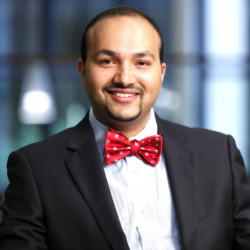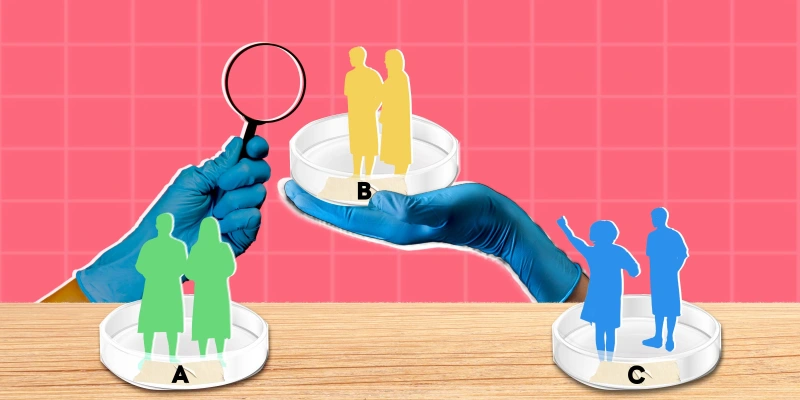ATA's AI Ambitions
The American Thyroid Association (ATA) is not just keeping up with the times; it's aiming to be ahead of the curve. The organization is actively exploring the integration of Artificial Intelligence (AI) in various aspects of thyroid disease management. The goals are to utilize AI for more accurate diagnoses, better treatment plans, and to alleviate the cumbersome task of managing EMR for physicians. Additionally, ATA is looking into how AI can be used as an educational tool for endocrine fellows and patients, democratizing knowledge and making complex medical information more accessible.
Opening Remarks and Presidential Address
The conference set the tone right from the start. The opening remarks and the presidential address emphasized the need for an AI-educated endocrine workforce. The ATA leadership highlighted upcoming sessions that focused on AI, signaling the organization's commitment to embracing this transformative technology.
A Year in Thyroidology: AI Takes the Spotlight
The plenary session on September 28 was a treasure trove of cutting-edge research. One paper that caught everyone's attention discussed integrating AI decision aids in thyroid nodule management. This study explored the dynamics of human-machine interaction and found that AI tools could offer different benefits for radiologists at various career stages. For senior radiologists, an optimized AI could reduce the read time, while for junior radiologists, it could be an educational tool that helps them understand diagnostic nuances and improve accuracy.
AI Chatbots: The Ethical and Practical Implications
This session, chaired by Dr. JP Brito of the Mayo Clinic, kicked off the event with a comprehensive primer on key AI terminologies, elucidating the differences between machine learning, deep learning, and natural language processing (NLP). Following this, Dr. David Toro-Tobon delved into the current and future applications of AI chatbots in clinical practice, research, and academia. Among the innovative uses he highlighted were AI-driven prior authorizations for medication denials and the use of AI to enhance the clarity of scholarly articles. However, he also cautioned the audience about the risks, such as chatbots generating false information or fabricated references. Intriguingly, Dr. Toro-Tobon noted that some studies have found AI chatbot advice to be perceived as more empathetic than that of human physicians.
Dr. Derek O’Keeffe then took the stage to discuss the ethical quandaries and potential pitfalls of AI chatbots in health care. He emphasized the utility of personalized avatars in providing effective medication administration instructions, suggesting that such advancements could alleviate workload pressures on physicians and ancillary staff. This, he posited, would enable health care professionals to operate at the peak of their licensure. The session concluded with a lively discussion among the attendees, further exploring the ethical and practical dimensions of AI chatbots in health care settings.
Networking in the Age of AI
The AI Networking session was a unique opportunity for thyroidologists interested in AI to come together and brainstorm. The goal is to form a workgroup that can identify the specific needs of ATA members and develop AI programs accordingly. This could range from research collaborations to educational modules tailored for endocrinologists.
Plenary on AI: The Big Picture
As one attendee put it, this session, chaired by Dr. Trevor Angell and Johnson Thomas, was an eye-opener. Dr. Nestoras Mathioudakis, from Johns Hopkins University, presented an in-depth exploration of "The Current State of AI and Future Applications in Medicine and Beyond." Dr. Mathioudakis began by demystifying core AI concepts, including supervised, unsupervised, semi-supervised, and reinforcement learning. He also provided a historical context, tracing the evolution of artificial intelligence and projecting its future trajectory in the medical field.
Dr. Mathioudakis then transitioned to the practical applications of AI in health care, covering a broad spectrum from diagnostics and drug discovery to personalized medicine and operational efficiency. He also touched upon the role of AI in virtual assistants and robotic surgery. Interestingly, he pointed out that a mere 5% of AI initiatives in medicine reach the stage of becoming commercially available, FDA-approved products, underscoring the need for more rigorous, prospective studies.
Looking ahead, Dr. Mathioudakis envisioned a future where multi-modal AI systems could be trained with limited labeled data, thereby expanding their utility and effectiveness. However, he also cautioned the audience about the challenges that lie ahead, including issues related to explainability, trust, legal responsibilities, data security, and inherent biases in AI algorithms.
AI in Thyroid Imaging
In an enlightening session, Dr. Marco A. Alvarez, an interventional radiologist from Mazatlan, Mexico, delved into the transformative role of AI in thyroid imaging. Dr. Alvarez, who incorporates AI into his daily practice, addressed the pressing issue of overdiagnosis of thyroid nodules and the subsequent unnecessary biopsies. He posited that AI has the potential to mitigate this problem by generating automated image descriptors and standardized reports, all aimed at elevating the quality of patient care.
Dr. Alvarez then introduced attendees to several AI systems currently in use for thyroid nodule risk stratification, including Koios, Piur Imaging, and AIBx. He noted that while Koios is FDA-approved, Piur and AIBx have yet to receive this designation. Demonstrating the Koios software live, Dr. Alvarez showed how physicians have the flexibility to modify descriptors if they disagree with the AI-generated assessments.
Switching gears, he presented a video showcasing Piur AI in action. The software allows for sweeping scans of the neck, subsequently generating 3D models of thyroid nodules along with detailed descriptors. This technology is particularly useful for tracking nodule volume following ablative procedures like Radiofrequency Ablation (RFA) and Laser treatments.
Dr. Alvarez also discussed AIBx, an AI system that offers explainability by displaying similar images and their corresponding diagnoses. AIBx provides editable TI-RADS descriptors, scores, and a final report, offering a comprehensive and customizable solution for clinicians.
Towards the end of his talk, Dr. Alvarez ventured into speculative territory, musing on the future possibility of predicting genetic mutations directly from ultrasound images of thyroid nodules.
AI in Predicting Thyroid Disorders
In the final session, Dr. Naykky Singh Ospina delved into the burgeoning field of AI applications in the diagnosis and management of various thyroid disorders, including Hyperthyroidism, Graves' Disease, Thyroid Eye Disease, Hypothyroidism, and Hashimoto's Thyroiditis. Dr. Singh Ospina began by highlighting several studies that underscore the predictive power of AI in diagnosing thyroid conditions. She cited a noteworthy study from Japan that utilized data from 176,727 patients to predict hyperthyroidism and hypothyroidism, achieving an impressive AUC of 0.94 and 0.91, respectively.
Dr. Singh Ospina was meticulous in evaluating the studies, emphasizing whether the AI models were explainable and if appropriate controls and comparisons were employed. She expanded the discussion to include the potential of AI in predicting post-radioactive iodine hypothyroidism and thyroid eye disease. Intriguingly, she also touched upon the role of large language models in the field of thyroidology, suggesting that these advanced algorithms could offer significant contributions to the discipline.
Concluding her talk, Dr. Singh Ospina emphasized that the development and implementation of AI in thyroidology should be problem-focused and adhere to a systematic approach. This, she argued, is essential for overcoming both existing and future challenges in the integration of AI into clinical practice.
The ATA's annual meeting served as a compelling showcase of how AI is poised to revolutionize thyroidology. From diagnostics to patient care and education, the potential applications are vast, promising a future where technology and medicine walk hand in hand for better patient outcomes.
Dr. Thomas holds several patents on thyroid AI.
Image by GoodStudio / Shutterstock






